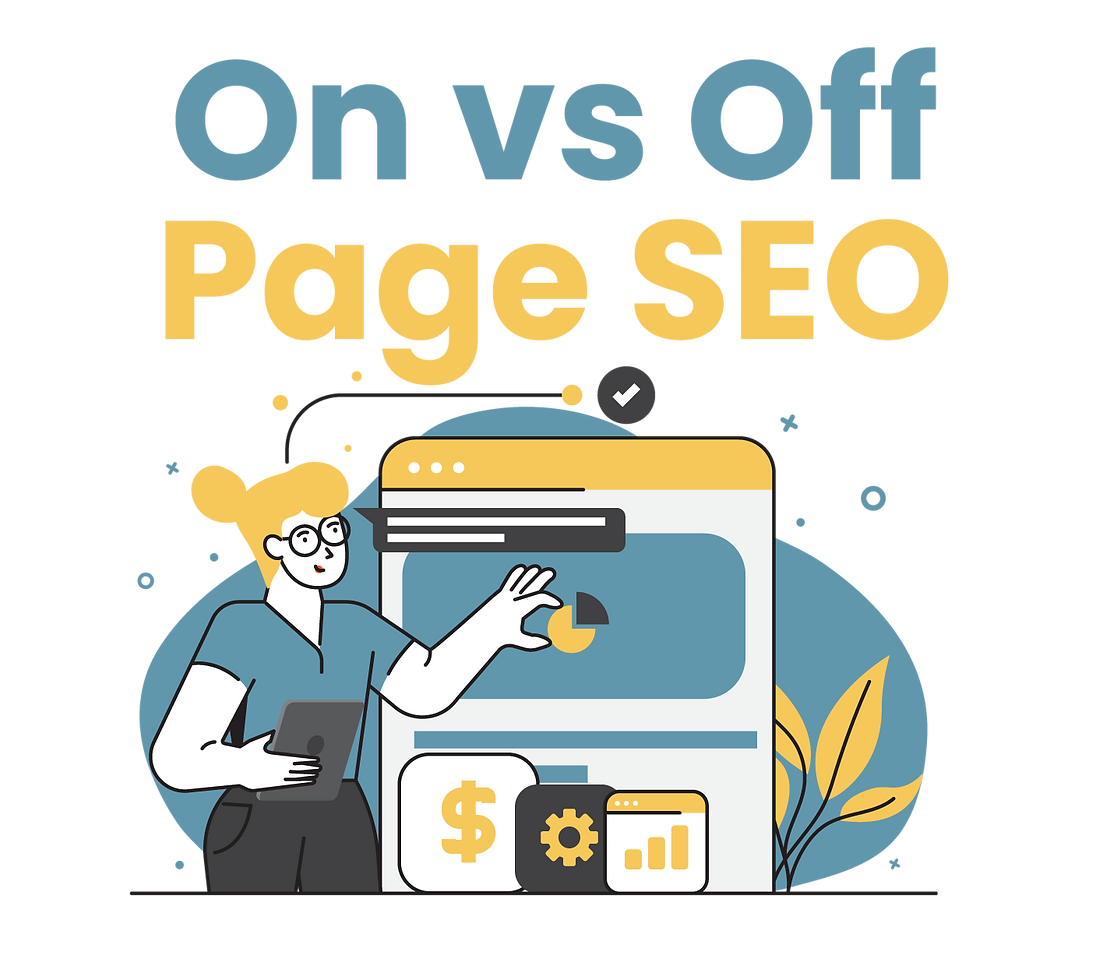On-Page vs. Off-Page SEO: What’s the Difference?
Creating a solid search engine optimization (SEO) content strategy is critical in order to climb the ranks of Google’s search engine results page (SERP). When developing your content strategy, it’s important to consider the elements, techniques, and categories that make up a successful SEO campaign.
Search engine marketing can be divided into on-page and off-page SEO. Fusing these marketing strategies will make for a robust and powerful SEO combination. On-page SEO focuses on optimizing your website, while off-page SEO focuses on increasing domain authority through content creation and backlinking.
On-Page SEO
On-page SEO, also known as on-site SEO, is the process of optimizing the aspects of your website that you have control over to increase your search engine rankings. Climbing the ranks of Google’s SERP is no easy task, but you can improve your site’s ranking with a solid marketing strategy. On-page SEO includes several factors that play a role in ranking on Google’s first page, such as site accessibility, page speed, SEO-rich content, keywords, title tags, and meta descriptions.
If you’re struggling to find your business when searching online, you may be lacking the adequate information that consumers are looking for. Even if you optimize all the on-page SEO factors, you may still miss important content, information, or answers to consumer questions. It’s essential to cover all content gaps to funnel every kind of consumer toward your products and services.
Key Components of On-Page SEO
Several components play a part in getting your website to reach the top search results for specific keywords, such as:
Title Tags
Title tags are essential and a critical factor in your on-page optimization. When creating your title tag, ensure that your main target keywords are included and limit the characters to 55-60 – including spaces. Be sure not to stuff your keywords and include the brand at the end of the title tag, separating each keyword or keyword phrase with a pipe bar (|). An example of this is “SEO Title Tags | Brandrep.”
Meta Descriptions
A meta description is a summary or description of a webpage and is placed under the URL on the SERP. The meta description briefly describes the content on the page and helps your page stand out from the competition. It’s important to include keywords and ensure that your meta description is under 155 characters so your entire description shows in the search results.
URL Structure & Taxonomy
The URL taxonomy is how the URL is structured and read by search engines. It’s essential to have an organized URL structure so search engines can easily crawl from each page and make navigation user-friendly. URLs should be easy to understand, include primary keywords, and be relatively short to gain the most clicks and visits.
Header Tags
Header tags can be described as the page’s headings and subheadings. These headers are the largest and most prominent words on the page, holding more weight than the rest of the copy. Header tags are represented by H1’s, H2’s, H3’s, or H4’s, but there is only one H1 per page. It’s vital that the main title of your webpage, or H1, is relevant to the page’s content, includes the primary keyword, and is attention-grabbing.
Alt-Text for Images
Ensuring your website is inclusive and user-friendly for everyone is paramount, which is why including alt-text for images is crucial. Alt-text helps blind users understand your content better by hearing descriptions of your photos. Alt-text is another component of your on-page optimization. Add relevant keywords while describing your image, making it easier for search engines and users to comprehend your content.
Webpage Copy & Content
When creating website copy and on-page blog content, it’s important to provide helpful information for your customers while offering answers to any questions they may have. The content on your site should be user-friendly, simple to navigate, and easily understandable. There is no exact word count each page needs to have, but Google often prefers a lot of quality content surrounding relevant keywords.
Internal Linking
Internal linking is linking related web pages to one another on your website, making it easier for the reader to navigate through pages and search engines to receive relevancy signals and crawl from page to page. Internal linking also increases customer retention and engagement by efficiently leading them to the following product or service.
Off-Page SEO
Off-page SEO is the strategic process of increasing your website’s authority by getting third parties to backlink to your website. Your domain authority is a major player in determining your site’s ranking. Increasing your domain authority can be done by receiving backlinks, which is when third-party websites post content with a link that tracks back to your site.
Optimizing for Off-Page SEO
The goal of off-page optimization is to show Google and other search engines that your website can be trusted and is knowledgeable in its specific industry. Some off-page SEO factors that can play a part in your SEO rankings include:
Backlinking
As previously mentioned, backlinking is one of the most significant off-page SEO components and can heavily influence your domain authority, which directly correlates to your SERP rankings. Backlinking occurs when another website reposts your content containing a direct link to your website.
Local SEO
Local search engine optimization involves online reviews from sites like Google My Business, Yelp, TripAdvisor, and other review sites. If your customers fill these sites with positive reviews, it will help boost your local SEO and bring your business to the top of local Google Map Pack searches. Be sure to manage your business profiles on these review sites and include your name, address, phone number, business hours, and any other important information.
On-Page vs. Off-Page SEO: Which One is More Important?
When developing your long-term SEO strategy, it’s essential to incorporate both on-page and off-page optimization techniques instead of focusing on just one method. Your on-page SEO is similar to creating a foundation for your website, while off-page optimization is the framework or superstructure. It’s important to use both strategies in a complementary fashion, continuously maintain and update both SEO strategies, and utilize them as a powerful combination










